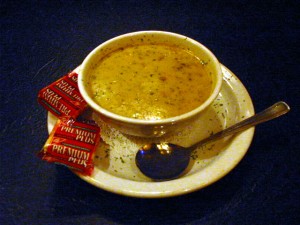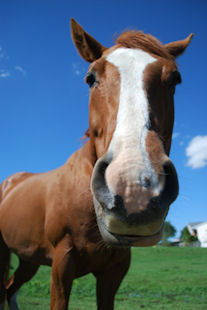
I sat next to Heidi Shimberg, VP of Development and Marketing for the Glazer Children’s Museum, at the Suncoast Chapter meeting of the Association of Fundraising Professionals in March. She told me an amazing story. In September of last year the Glazer Children’s Museum held its grand opening. Only six months later, they have a whopping 6,000 members!
Her fundraising dilemma? To do a wealth screening on 6,000 people would put an unhealthy bulge in the budget. “So why not filter your list and send a smaller number of records to be screened?” I suggested to Heidi. She had thought of that, but when you are brand spanking new, what do you filter by? She felt that if she filtered by wealthy zip codes or addresses, she might miss some “hidden” prospects. It troubled her.
As I was driving my cat to the veterinarian the next morning, my conversation with Heidi was on my mind. Then the light bulb went off. Heidi might not need a prospect researcher on staff, but she sure needed a prospect research strategy. She was averaging 1,000 members a month!
When there are no big dollars in your budget how do you get smart – and still get big dollars in gifts?
Depending on the amount of pressure to raise funds, Heidi has some fun choices. She could go for the wealth screening and decide on a fundraising strategy for cultivating people with known wealth – maybe joining a special society as a first step and/or one-on-one meetings. Armed with the wealth screening she knows exactly who can give and won’t waste any time approaching members who can’t give.
Or she could swing wider and filter her list by addresses, making a first contact without any real wealth information. Cultivating more people in small groups instead of one-on-one would allow her to find “hidden” donors in her community. Ask the Benevon people about that one. It works.
I can hear you calling me to account. “But Jen, you have not addressed Heidi’s concern about missing the hidden prospects in her member list!” Well here’s the answer. Without a giving history to the Glazer Children’s Museum or any other history (like event attendance etc), Heidi cannot know a crucial piece of information – affinity, or how close someone feels to the museum. It’s just too new. You can’t screen for that on a newborn list. What she can do is methodically approach prospects while developing her entire member list.
Going from “A” to “Z” contacting 6,000 members is foolish. Heidi knows this. Picking 1,000 and working them in small groups will have Heidi training another gift officer next year when her well-stewarded member list, which has also been solicited for unrestricted operating dollars, gets filtered again for the next 1,000. And since she started with her best prospects, she can now feel better about having a trainee cultivating the “B” list. By year five there isn’t likely to be a “hidden” prospect, especially because now there will be money in the budget for a wealth screening on a well-kept donor/member database!
If we could all start out with the very best prospect research tools, so much more could happen. But that’s not reality and it doesn’t have to stop a fundraiser like Heidi from exceeding her major gift fundraising goals.
Aspire Research Group wants to see you succeed. If that means a one or two-hour consult to brainstorm for a mean-and-lean strategy, we’re all about it. Call us today! (727) 231-0516 or email jen at aspireresearchgroup.com.



 I usually attract two types of clients: those that want to identify major gift prospects and those that want research on identified prospects. No matter which service I provide, sometimes my clients get stalled on the next steps. You might have the donor prospect right there in front of you, but over time the path to a gift gets as lost as Hansel and Gretel’s bread crumbs in the forest of development activities.
I usually attract two types of clients: those that want to identify major gift prospects and those that want research on identified prospects. No matter which service I provide, sometimes my clients get stalled on the next steps. You might have the donor prospect right there in front of you, but over time the path to a gift gets as lost as Hansel and Gretel’s bread crumbs in the forest of development activities.

